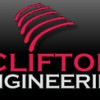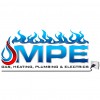Founded in 1999, CRS Engineering is a small privately owned company which specialises in the manufacture of Heat-pipes and and is acknowledged internationally for providing customer specific thermal solutions. CRS Engineering concentrates its efforts at the leading edge of thermal technologies.
Investing into research and development, and with an active involvement in customer applications, CRS Engineering has made cutting edge advances in Heat-pipe technology, further elevating operational and performance capabilities of specific thermal systems.In response to customers requirements for components of optimal quality, performance and reliability, CRS Engineering sets exacting standards.
All Heat-pipes and integrated thermal systems produced by CRS Engineering under go in-process checks and are all individually inspected and performance tested prior to despatch. CRS Engineering has also wide experience in confidential technical development projects, including classified military defence work.
Investing into research and development, and with an active involvement in customer applications, CRS Engineering has made cutting edge advances in Heat-pipe technology, further elevating operational and performance capabilities of specific thermal systems.In response to customers requirements for components of optimal quality, performance and reliability, CRS Engineering sets exacting standards.
All Heat-pipes and integrated thermal systems produced by CRS Engineering under go in-process checks and are all individually inspected and performance tested prior to despatch. CRS Engineering has also wide experience in confidential technical development projects, including classified military defence work.
Services
In their simplest forms Heat-pipes comprise of a sealed vessel containing a working fluid and its vapour, together with a capillary wick lining system.
A Heat-pipe can be basically thought of as a super heat conductor, they provide a thermal absorbtion and transfer system with the capability to move large amounts of power in the form of heat energy.
The application of heat at any point on the Heat-pipe surface, causes a liquid / vapour phase change inside which enables heat energy to be transmitted in the vapour phase with only a minimal temperature gradient.
A Heat-pipe can be basically thought of as a super heat conductor, they provide a thermal absorbtion and transfer system with the capability to move large amounts of power in the form of heat energy.
The application of heat at any point on the Heat-pipe surface, causes a liquid / vapour phase change inside which enables heat energy to be transmitted in the vapour phase with only a minimal temperature gradient.
The operational principal of a Heat-pipe is brilliantly simple!
However the technology required to produce Heat-pipes that perform optimally and reliably is complex and very exacting.
The above diagrams show views of a sectioned Heat-pipe metallic enclosure with the installed capillary lining.
Operating on the principle of latent heat of vaporisation, Heat-pipes utilise the phase change of a working fluid operating in what is an otherwise completely evacuated and sealed enclosure.
However the technology required to produce Heat-pipes that perform optimally and reliably is complex and very exacting.
The above diagrams show views of a sectioned Heat-pipe metallic enclosure with the installed capillary lining.
Operating on the principle of latent heat of vaporisation, Heat-pipes utilise the phase change of a working fluid operating in what is an otherwise completely evacuated and sealed enclosure.
The following tables provide design engineers with as much information as is possible here for the CRS Engineering Standard Range Heat-pipes.
The function of a Heat-pipe is dependant upon an effective capillary action system to return the working fluid from the condenser section (Cd) where cooling is applied, to the evaporator section (Ev) where heat input to the Heat-pipe is applied.
This function is served by the porous lining wick structure or "wicking system" which is built into the Heat-pipe.
The function of a Heat-pipe is dependant upon an effective capillary action system to return the working fluid from the condenser section (Cd) where cooling is applied, to the evaporator section (Ev) where heat input to the Heat-pipe is applied.
This function is served by the porous lining wick structure or "wicking system" which is built into the Heat-pipe.
In this application a Heat-pipe is being used to stabilise the temperature of a sensor head of an infra-red gas analyser which is for use in environmental control monitoring equipment.
The Heat-pipe is mounted via its heat sink mounting block to a temperature controlled heat sinking plate.
Power dissipation 40W with only 35° C rT from ambient.
Here a clustered array of Heat-pipes are used in a high temperature gas flow manifold where over 5 kW of heat energy is transferred to cooling water, and the gas on temperature may exceed 700°C.
The Heat-pipe is mounted via its heat sink mounting block to a temperature controlled heat sinking plate.
Power dissipation 40W with only 35° C rT from ambient.
Here a clustered array of Heat-pipes are used in a high temperature gas flow manifold where over 5 kW of heat energy is transferred to cooling water, and the gas on temperature may exceed 700°C.
Heat-pipe cabinet coolers offer a compact and convenient method of cooling IP 54 enclosures.
An internal fin bank is connected to an external fin bank using Heat-pipes.
A central dividing plate forms an integral sealed part of the assembly.
Installation requires only a suitable rectangular cut-out and fixing hole locations to be made in the enclosure.
The units are hermetically sealed to the enclosure via the central dividing plate.
Typically, small units handle 200W to 2 kW and maintain an internal ambient of less than 50°C.
An internal fin bank is connected to an external fin bank using Heat-pipes.
A central dividing plate forms an integral sealed part of the assembly.
Installation requires only a suitable rectangular cut-out and fixing hole locations to be made in the enclosure.
The units are hermetically sealed to the enclosure via the central dividing plate.
Typically, small units handle 200W to 2 kW and maintain an internal ambient of less than 50°C.
Reviews

Be the first to review C R S Engineering.
Write a Review



